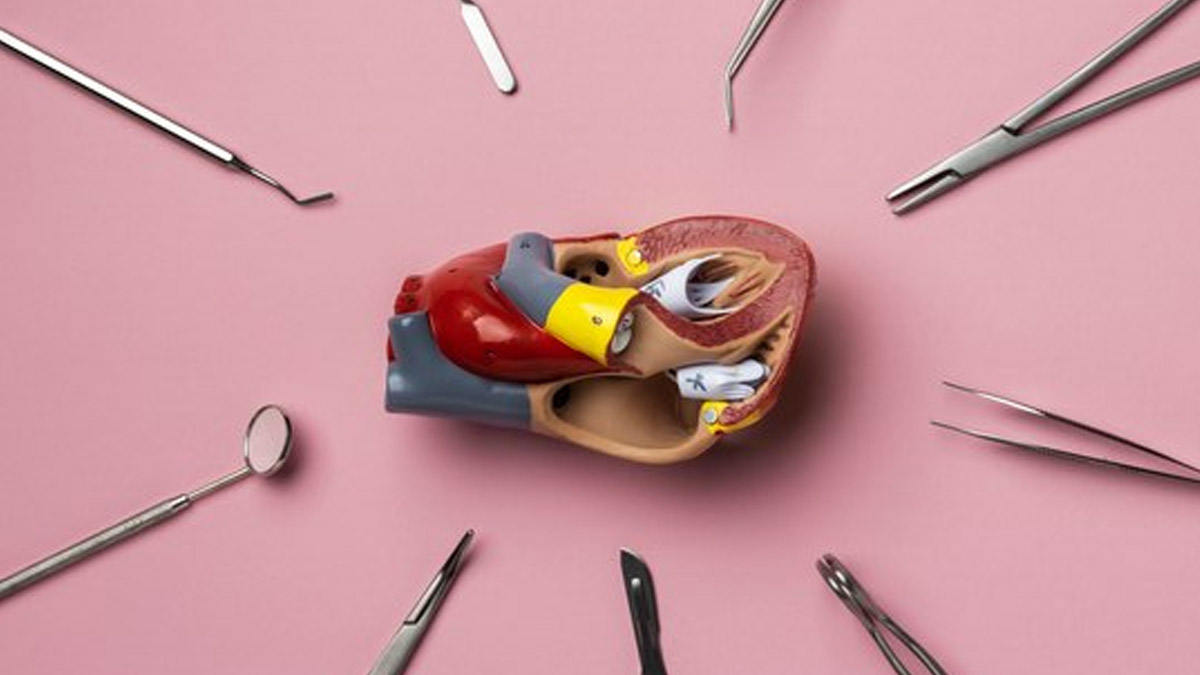
Did you know mitral valve prolapse is a common heart condition characterised by the bulging of one or both of the mitral valve flaps into the left atrium of the heart during the heart's contraction? While MVP often does not cause significant problems and may not require treatment, it can lead to complications in some cases. Dr Rajiv Chaudhary, MBBS, MD, VMMC, New Delhi explained the overview of mitral valve prolapse, its symptoms, and treatment options:
Table of Content:-
Causes of Mitral Valve Prolapse
The exact cause of mitral valve prolapse is not always clear, but it is believed to involve a combination of genetic factors and abnormalities in the structure of the mitral valve.

According to the American Heart Association, when the heart contracts, one or both flaps collapse backward into the left atrium. In some situations, the prolapsed valve allows a little quantity of blood to escape backward through the valve, known as regurgitation, which can result in a heart murmur sound.
Also read : `World Heart Day 2023: All About Heart Valve Replacement, A Life Saving Procedure For Millions
Symptoms
Many people with mitral valve prolapse may not experience any symptoms and may not be aware of the condition. When symptoms do occur, they can vary widely in severity and may include:
- Heart Palpitations: Sensation of rapid, fluttering, or irregular heartbeat.
- Chest Pain: Often described as sharp or stabbing and may be mistaken for a heart attack.
- Fatigue: Feeling tired or lacking energy, especially during physical activity.
- Shortness of Breath: Difficulty breathing or catching your breath, especially during exertion.
- Dizziness or Lightheadedness: Feeling faint or dizzy, particularly when standing up quickly.
- Murmur: A distinctive sound heard through a stethoscope, indicating abnormal blood flow through the heart.
Diagnosis
Mitral valve prolapse is typically diagnosed through a combination of a physical exam, medical history review, and diagnostic tests, including:
- Echocardiogram: This imaging test uses sound waves to create detailed images of the heart's structure and function, allowing doctors to visualise the mitral valve and assess for prolapse.
- Electrocardiogram (ECG or EKG): This test records the electrical activity of the heart and can help detect irregular heart rhythms or other abnormalities.
- Holter Monitor: This portable device records the heart's electrical activity over a period of 24-48 hours, providing continuous monitoring for the detection of abnormal heart rhythms.

Treatment
Treatment for mitral valve prolapse is typically focused on managing symptoms and preventing complications. In many cases, no treatment is needed, and the condition can be monitored periodically by a doctor. However, treatment options may include:
Doctors can suggest beta-blockers or calcium channel blockers may be prescribed to help manage symptoms such as palpitations, chest pain, or high blood pressure.
- Anticoagulants: In cases where there is a risk of blood clots forming due to abnormal blood flow through the heart, anticoagulant medications like aspirin or warfarin may be recommended.
- Surgery: In severe cases of mitral valve prolapse with significant valve dysfunction or the presence of complications such as severe regurgitation or heart failure, surgical repair or replacement of the mitral valve may be necessary.
Lifestyle Management
It is importnat to maintain healthy lifestyle, and engaging in regular physical activity can help strengthen the heart muscle and improve overall cardiovascular health.
- Healthy Diet: Eating a balanced diet rich in fruits, vegetables, whole grains, and lean proteins can help support heart health and manage symptoms.
- Stress Management: Stress can exacerbate symptoms of mitral valve prolapse, so finding healthy ways to manage stress, such as relaxation techniques or counselling, may be beneficial.
Also read: Tricuspid Valve Disease: Symptoms, Diagnosis And Treatment Explained
Regular Follow-up
People with mitral valve prolapse should have regular follow-up appointments with their doctor to monitor their condition, assess symptoms, and evaluate for any changes in heart function or structure. With appropriate management and lifestyle modifications, many individuals with mitral valve prolapse can lead healthy, active lives with minimal complications.
Also watch this video
How we keep this article up to date:
We work with experts and keep a close eye on the latest in health and wellness. Whenever there is a new research or helpful information, we update our articles with accurate and useful advice.
Current Version